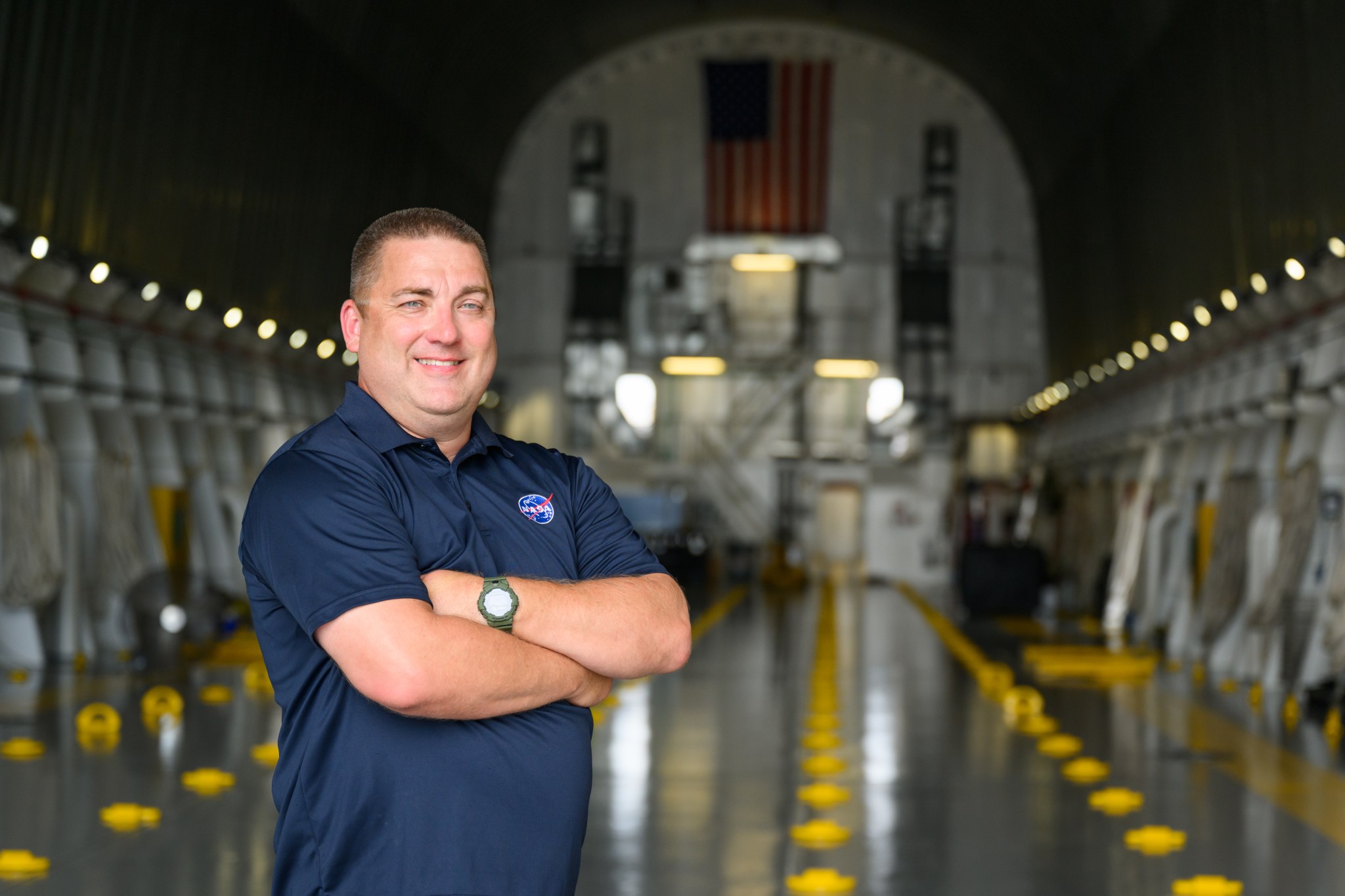
How do you move NASA's SLS (Space Launch System) rocket's massive 212-foot-long core stage across the country? You do it with a 300-foot-long barge. However, NASA's Pegasus barge isn't just any barge. It's a vessel with a history, and John Campbell, a logistics engineer for the agency based at NASA's Marshall Space Flight Center in Huntsville, Alabama, is one of the few people who get to be a part of its legacy.
For Campbell, this journey is more than just a job - it's a lifelong passion realized. "Ever since I was a boy, I've been fascinated by engineering," he said. "But to be entrusted with managing NASA's Pegasus barge, transporting history-making hardware for human spaceflight across state lines and waterways - is something I never imagined."
NASA has used barges to ferry the large,and heavy hardware elements of its rockets since the Apollo Program. Replacing the agency's Poseidon and Orion barges, Pegasus was originally crafted for the Space Shuttle Program and updated in recent years to help usher in the Artemis Generation and accommodate the mammoth dimensions of the SLS core stage. The barge plays a big role in NASA's logistical operations, navigating rivers and coastal waters across the Southeast, and has transported key structural test hardware for SLS in recent years.
Campbell grew up in Muscle Shoals, Alabama. After graduating from the University of Alabama with a degree in mechanical engineering, he ventured south to Panama City, Florida, where he spent a few years with a heating, ventilation, and air conditioning consulting team. Looking for an opportunity to move home, he applied for and landed a contractor position with NASA and soon moved to his current civil service role.
With 17 years under his belt, Campbell has many fond memories during his time with the agency. One standout moment was witnessing the space shuttle stacked in the Vehicle Assembly Building at NASA's Kennedy Space Center in Florida. But it's not all about rockets and launch pads for Campbell. When he isn't in his office making sure Pegasus has everything it needs for its next trip out, he is on the water accompanying important pieces of hardware to their next destinations. With eight trips on Pegasus under his belt, the journey never gets old.
"There is something peaceful when you look out and it's just you, the water, one or two other boats, and wildlife," Campbell said. "On one trip we had a pod of at least 20 dolphins surrounding us. You get to see all kinds of cool wildlife and scenery." From cherishing special moments like this to ensuring the success of each journey, Campbell recognizes the vital role he plays in the agency's goals to travel back to the Moon and beyond and does not take his responsibility lightly.
"To be a part of the Artemis campaign and the future of space is just cool. I was there when the barge underwent its transformation to accommodate the colossal core stage, and in that moment, I realized I was witnessing history unfold. Though I couldn't be present at the launch of Artemis I, watching it on TV was an emotional experience. To see something you've been a part of, something you've watched evolve from mere components to a giant spacecraft hurtling into space - it's a feeling beyond words."
NASA is working to land the first woman, first person of color, and its first international partner astronaut on the Moon under Artemis. SLS is part of NASA's backbone for deep space exploration, along with the Orion spacecraft, supporting ground systems, advanced spacesuits and rovers, the Gateway in orbit around the Moon, and commercial human landing systems. SLS is the only rocket that can send Orion, astronauts, and supplies to the Moon in a single launch.
Read other I am Artemis features.






